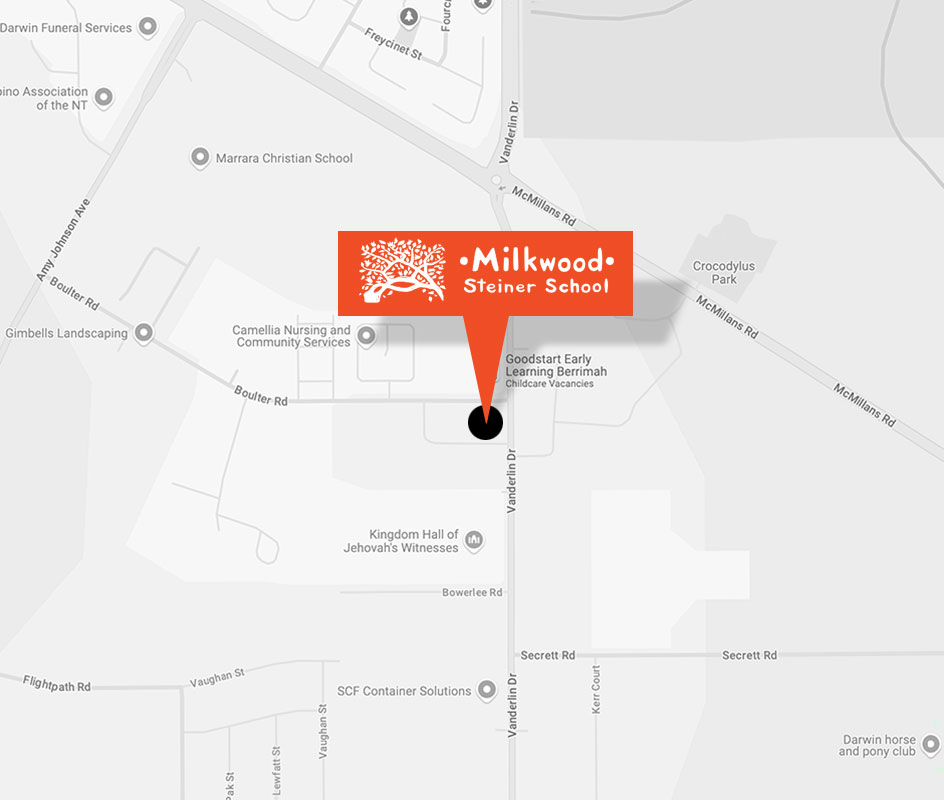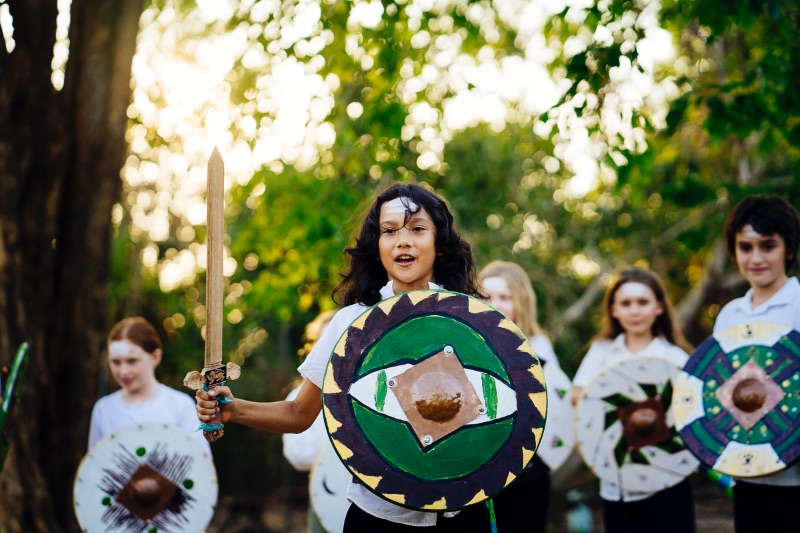Primary Years
A central part of the class teacher’s task is to intimately understand the needs of each child, and to nurture the development of a real spirit of sharing and community within the class. In a loving, structured environment, with the encouragement of their classmates and teachers, the children develop and appreciate their strengths and work at their difficulties. The social and moral learning that takes place in childhood is as important as the academic.
In the younger grades, subjects are introduced through artistic mediums. This promotes abilities such as creative and flexible thinking, imagining ideas and problems from different perspectives and layering one thought upon another as part of a process of problem solving. Children can attain greater levels of achievement in all subjects through this method, than from dry lecturing and rote learning. Mastery of oral communication is integral to all learning. Hearing, re-telling, acting and illustrating stories enrich the child’s imaginative life and grasp of language. The ability to generate ideas, communicate them and bring them to fruition is essential to future success in adult life.
Reading and writing are taught from Class 1. The child first learns to write using the shape of the letters to suggest meaning, i.e. M for mountain, V for valley, W for waves. In addition, they may walk the shape on the floor in the classroom and draw pictures that include the shape. This allows a deeper connection with, and an understanding of the letters, rather than just memorising the abstract shapes. The children write words and read their own writing before working with printed literature. An understanding of numbers is built on the basis of concrete, real-life tasks – such as dividing a cake to share, estimating, measuring and through counting aloud, chanting of tables, musical rhythms and skipping games. These learning experiences are real and meaningful. The children may also learn games such as chess, which enhance thinking and mathematical ability.
We aim throughout the classes to share the finest literature with the students, which is appropriate to their age. The stories told by the teacher change as the child develops, correlating the epoch of human history with the developmental stages of the child.
The Main Lesson is one of the basic elements of Steiner education curriculum. It involves the thorough working of the main subjects (such as geography, science, history, mathematics or literature), taught in main lesson blocks of about two hours per day, over several weeks. It is always conducted in the morning, when the children are fresh and is followed by a change of activity.
Music is a very important form of expression and brings balance to the day. Exercises for training the musical ear are practiced, providing a solid base for subsequent musical accomplishment. Singing and choral work are developed throughout the school years. Children learn the recorder from Class One. Individual tuition of a stringed instrument and music notation is taught from Class Three, and by Class Four children participate in orchestral work.
Art and Handwork are an integral part of the curriculum and are used as a way of engaging the children in the current topic from every angle. This complements and enhances the intellectual aspects of the class work. Learning through the arts promotes multiple skills and abilities and nurtures the development of cognitive, social and personal competencies. Art includes recitation and drama, wet-on-wet painting, form drawing, beeswax and clay modelling, and handcrafts such as sewing, knitting, weaving, woodwork and carving. The primary school child experiences life as a world of pictures and feelings. This promotes a rich inner structure enabling the later development of conceptual thinking. Children who learn to make practical things in an artistic way, for the benefit of others as well as themselves, will be able to form their lives and their relationships in a social and artistic way when they are older, thereby enriching their lives. The training through art in school is not for the purpose of producing artists but in order to educate young people for the art of living, based on disciplined exercise.




